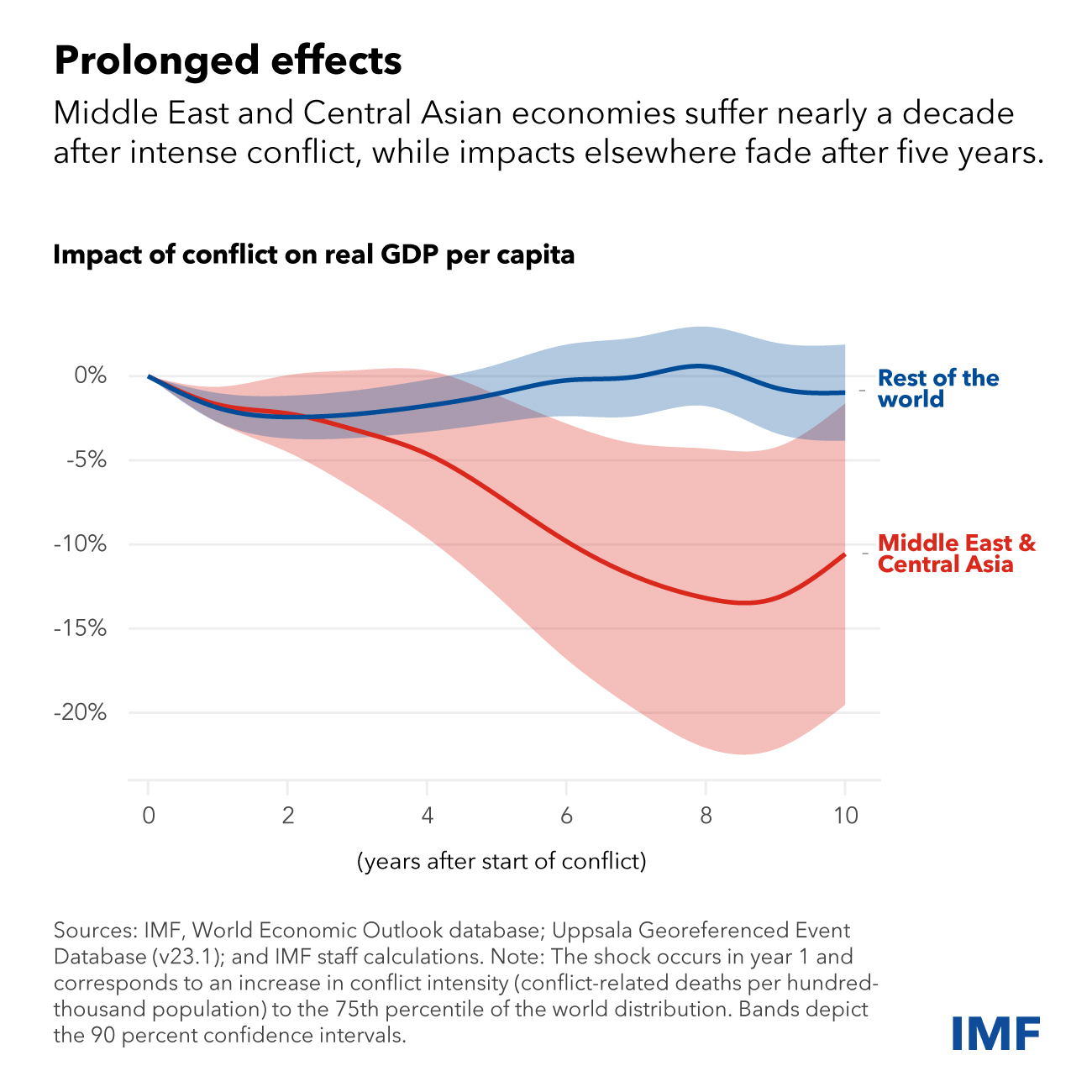Economies across the Middle East and Central Asia are more affected by conflicts—even a decade after a severe conflict, their income per capita remains about 10 percent lower.
The idea that violent conflict reduces economic output is uncontroversial. However, the repercussions are notably harsher and longer lasting in these regions than in most others, as we show in a chapter of our latest Regional Economic Outlook for the Middle East and Central Asia.
A year after the start of a severe conflict, countries in these regions lose about 2 percent in real GDP per capita compared to before the conflict, with the decline extending to about 10 percent after a decade. Countries elsewhere, by contrast, typically have a similar drop after the first year, of about 2 percent, but then largely recover after the fifth year, as the Chart of the Week shows.
The findings underscore the adverse effects on economic performance, as well as higher inflation and lower consumption, investment, exports, and fiscal revenues. Our analysis, based on events from 1989 to 2022 tracked by the Uppsala Conflict Data Program, includes episodes of lethal violence between groups where at least one party is the government or between two organized groups, neither of which is a government. Some of the region’s most conflict-affected states—Afghanistan, Iraq, Somalia, Sudan, Syria—have endured some form of conflict for most of the sample period.
The worse effects seen in the Middle East and Central Asia, among the world’s most conflict-prone areas, likely reflect sharper effects from higher-intensity conflicts (which are more frequent in these regions) and the prevalence of exacerbating preexisting conditions. For example, our findings suggest that countries with weaker institutions tend to suffer larger losses than other countries. Conflicts not only impact the countries directly involved but can also have knock-on effects on other countries, with the impact varying based on the channel of exposure.
The effects of conflicts stretch well beyond economics, causing immense human suffering, death, and increased fragility and food insecurity. Strong institutions and economic fundamentals (such as room in government budgets to respond to humanitarian and social needs) can help buffer an economy against the impact.
—This blog is based on Chapter 2 of the April 2024 Regional Economic Outlook for the Middle East and Central Asia, “Fragile Foundations: The Lasting Economic Scars of Conflict.” For more, listen to a recent IMF podcast on how the economic impact of conflict in the Middle East and Central Asia is larger and more persistent than in other regions.







